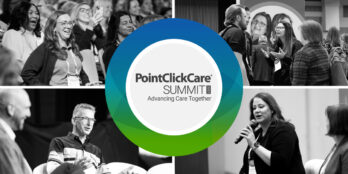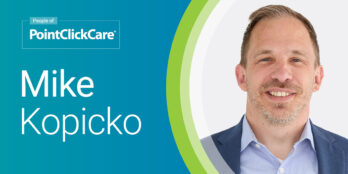
Future-proof Your Senior Living Workforce
 6 min
6 min
In the coming years, five different generations of workers will be working in the senior care industry. By 2020, millennials and generation Z will make up more than half of the U.S. workforce. Understanding the characteristics of these unique cohorts will help senior living organizations in recruiting and retaining these workers, who will be the backbone of their care staff.
The Cost of Turnover
Turnover has a big impact on overall organizational performance in senior living communities. Millennials are more likely than other generations to change jobs, with 8% leaving their job within the first month, and 32% of millennials leaving within the first 3 months. High staff turnover leads to lower quality of care and an increase in overhead costs of programs. Without solid retention and engagement strategies in place, senior living organizations are more likely to lose employees.
Challenges of Recruiting in Healthcare
A low unemployment rate in the U.S. is making it difficult for senior living organizations to attract and retain employees. There simply aren’t enough people to fill all of the available positions, making it even more important to ensure that employees are comfortable in their role and are properly trained for the position. One of the top reasons workers leave the healthcare industry is because they don’t spend enough time with residents. Many senior living employees say they feel too much of their time is spent on administrative tasks rather than spending time with residents. Implementing the right technology in your senior care organization can help workers be more successful at their job.
Generational Characteristics Affecting Retention
As you continue to try and attract and retain the right talent, it’s also important to understand the characteristics of your workers working within your communities. Here are some characteristics and ways to retain different generations of workers that will be working in the senior care industry in the coming years:
Generation X – Born 1961-1980
Characteristics
- Like mentoring
- Comfortable with change
- Value personal growth
- Work to live
Ways to Retain
- Provide flexibility at work
- Don’t micro manage
- Provide training and education
- Provide leadership opportunities
Generation Y – Born 1981-1995
Characteristics
Ways to Retain
- Multi-taskers
- Personal relationships are important
- Values challenges
- Need to know they are making a difference
- Provide opportunities for professional development
- Provide constant feedback
- Recognize their achievements with promotions or rewards
Generation Z – Born 1996-2010
Characteristics
Ways to Retain
- Less likely to job-hop than millennials
- Want to make a difference
- More independent and competitive than Gen Y
- Provide opportunities for professional development
- Focus on your purpose instead of profit
- Provide constant feedback
- Provide up to date technology like video chatting
Technology Considerations
Technology is critical to retaining staff and financial health of senior living organizations. You no longer have to purchase one type of computer and deploy it across your organization. Allowing employees to bring their own device can improve workflow and help your organization save money. PointClickCare Companion can help solve your technology needs. Companion is a mobile app that streamlines the workflow for service delivery and documentation. It helps care givers manage their day and have more time to care for residents, and less time on documentation. Without the proper technology in place, recruiting and retaining younger generations of workers will be impossible.
Find the Right Balance
Do away with a “one size fits all” mentality. When trying to recruit and retain multiple generations of workers, it’s important to remember that each generation has a different set of needs. This means you will have to align your recruitment and retention programs to the type of worker. Your orientation program should begin prior to an employee’s first day and should look at the full spectrum from recruitment to retention, and engagement of your employees.
What’s Your Next Step?
1. Build a Baseline
Survey your staff to learn more about what motivates them and what they considered for when looking for a job. You can learn a lot from your current staff that will help you guide programs for retention in the future.
2. Cultural Transformation
Start establishing engagement efforts through recognition and mentorship programs. It’s important to meet with your staff face-to-face to learn more about what they like about the organization and what changes they’d like to see. Building an innovative culture is also a way to stand out as an employer and attract the next generation of workers.
We often think about how we market to our clients, but not how we market to our workforce. Attracting the right employees starts by taking a different stance and showcasing what you have to offer as an organization.
To learn more, check out our webinar Future-proof Your Senior Living Workforce – Retention Strategies for 2020 and Beyond, or connect with us to learn how we can help you solve these challenges and future-proof your workforce.
August 15, 2019






